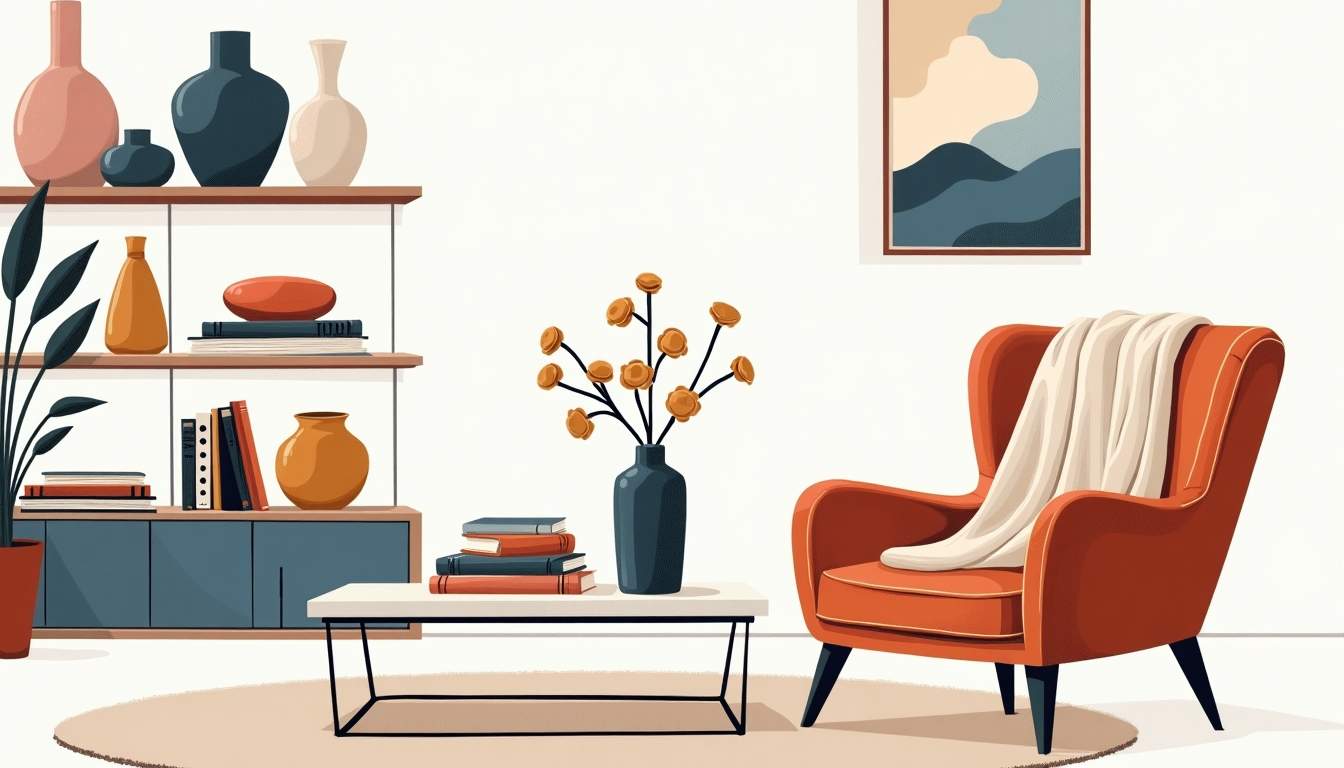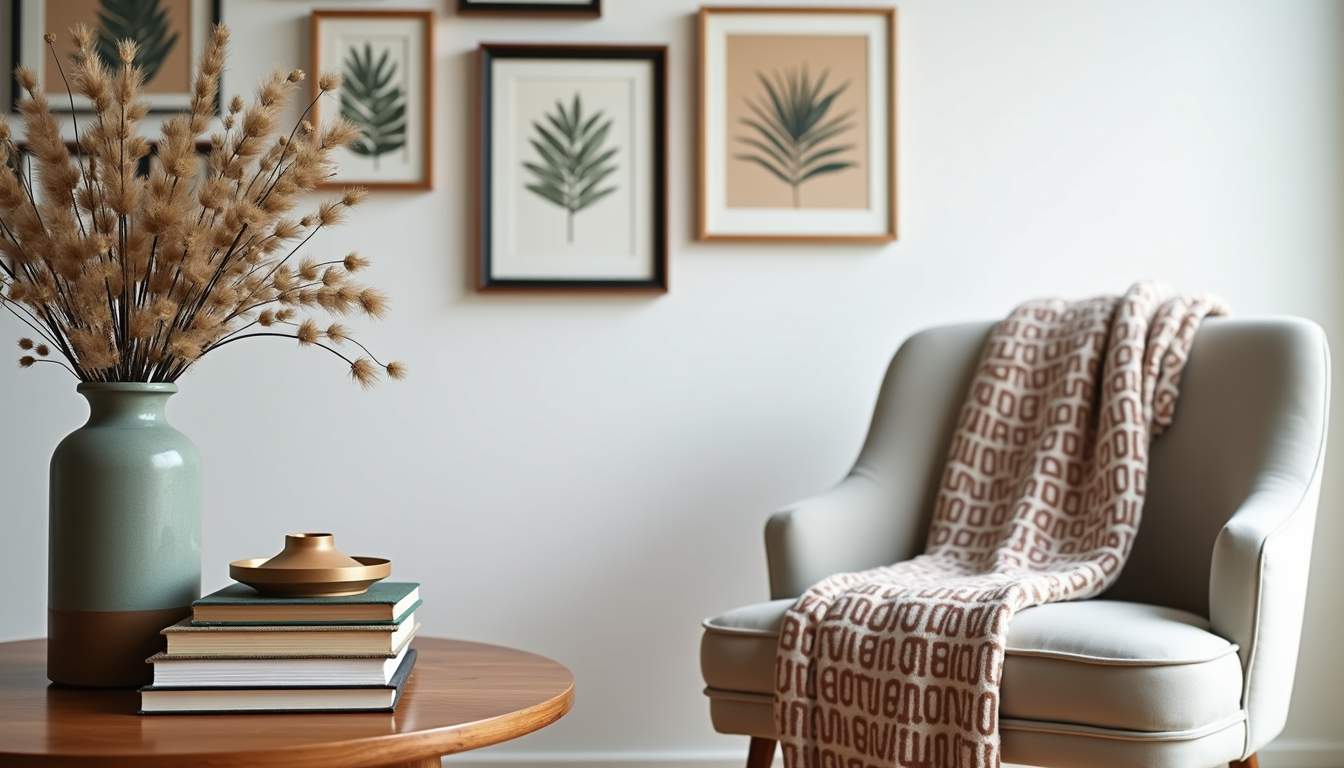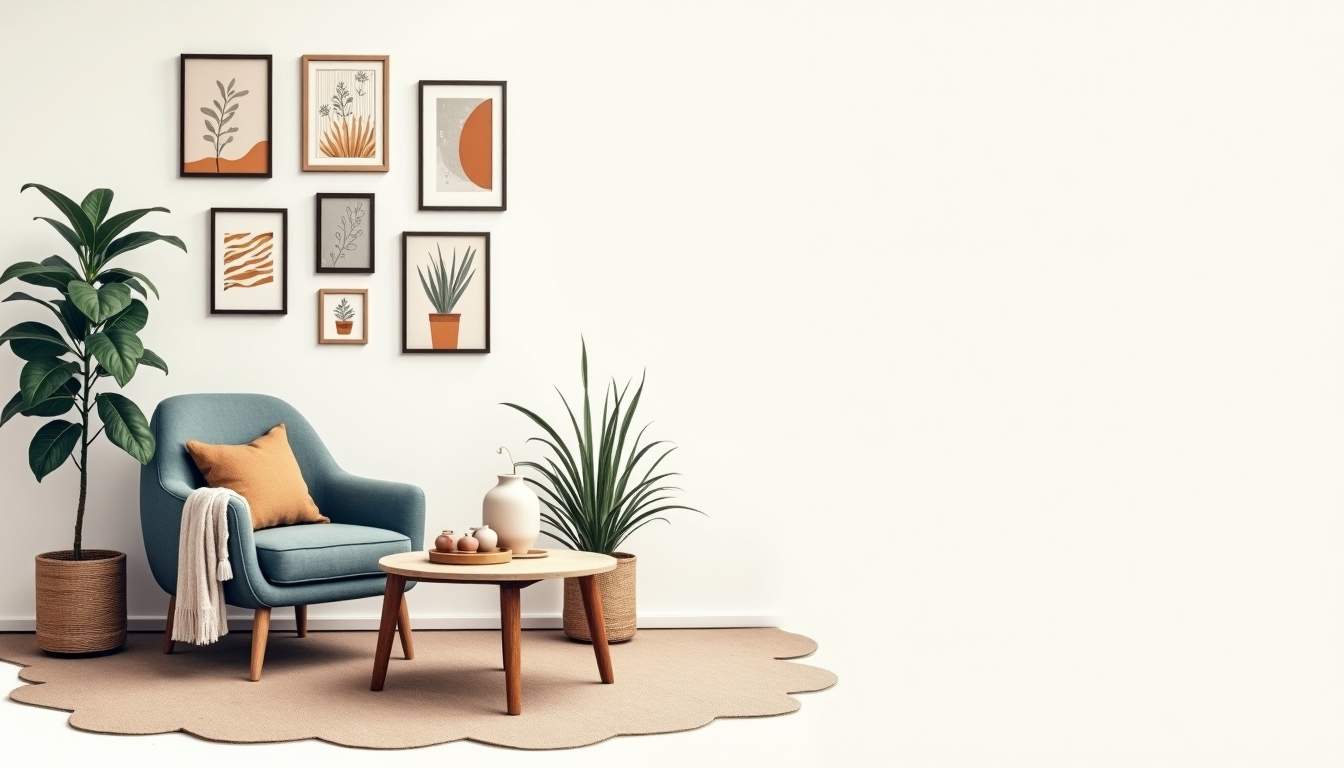Creating a home that feels both welcoming and stylish is an art form that goes beyond just choosing the right furniture or paint colors. It’s the finishing touches the carefully selected accessories, the subtle layering of textures, and the thoughtful arrangement of decor—that truly bring a space to life. These elements reflect personality, enhance comfort, and transform a house into a home.
Whether you’re starting fresh or looking to refresh your current space, understanding how to style and accessorise effectively can make all the difference. This guide explores the key principles and practical tips to help you master the art of home styling with accessories that matter.
The Power of Accessories: Why They Matter
Accessories are the punctuation marks of interior design. Just as a sentence without punctuation can feel incomplete or confusing, a room without accessories can seem flat and lifeless. Accessories add character, warmth, and individuality to your home.

From cushions and throws to artwork and plants, these elements allow you to express your style and create a mood. They can soften hard lines, introduce color and pattern, and provide tactile interest. Moreover, accessories are often the easiest and most affordable way to update your space without a major overhaul. A simple change, like swapping out a few throw pillows or adding a new piece of art, can breathe new life into a room, making it feel fresh and inviting.
Creating Personality Through Personal Items
Incorporating personal items such as family photos, travel souvenirs, or handmade crafts makes a home uniquely yours. These pieces tell your story and invite guests to connect with your life and experiences. Displaying them thoughtfully whether on a gallery wall, a curated shelf, or a mantelpiece turns your space into a living narrative. For instance, a collection of vintage postcards from your travels can spark conversations and evoke memories, while a handmade quilt passed down through generations adds a layer of history and sentimentality to your decor. Each item becomes a conversation starter, allowing you to share your journey with those who enter your home. To explore more creative décor ideas, visit Molecule Designs through the following link: https://www.moleculedesigns.co.uk/
Balancing Functionality and Aesthetics
While accessories are primarily decorative, many also serve practical purposes. Stylish storage baskets, elegant trays, or decorative bowls can help organize clutter while enhancing the room’s look. Choosing accessories that marry form and function ensures your space remains both beautiful and livable. For example, a chic coffee table can double as a storage unit for magazines or blankets, while a set of decorative hooks can hold your keys and bags in a visually appealing way. This balance between utility and style not only keeps your home tidy but also elevates the overall aesthetic, making it a true reflection of your lifestyle and preferences.
Furthermore, the careful selection of materials and textures in your accessories can enhance the sensory experience of your home. Soft textiles like velvet or linen can create a cozy atmosphere, while metallic accents can add a touch of glamour and sophistication. Layering different textures—such as a woven basket next to a smooth ceramic vase—can create visual interest and depth, inviting people to explore and engage with your space. By thoughtfully curating these elements, you can transform your home into a sanctuary that feels both inviting and uniquely yours.
Layering Textures and Patterns
One of the secrets to a well-styled home is layering textures and patterns to create depth and visual interest. This approach prevents a space from feeling monotonous and adds a cozy, inviting vibe.

Mixing Textures
Combining different materials—like soft velvet cushions, rough linen curtains, smooth ceramics, and natural wood—engages the senses and enriches the environment. For example, a leather sofa paired with a chunky knit throw and a woven jute rug introduces contrast that feels both sophisticated and approachable.
When layering textures, consider the scale and balance. Too many heavy textures can overwhelm, while too few can leave the room feeling cold. Aim for a harmonious blend that complements your overall style.
Playing with Patterns
Patterns add energy and personality to a room. Stripes, florals, geometrics, and abstract prints can coexist beautifully when thoughtfully combined. The key is to vary the scale and color palette to maintain cohesion.
For instance, pairing a large floral curtain with smaller patterned cushions and a subtle geometric rug can create a dynamic yet balanced look. Patterns also help define different zones within open-plan spaces, guiding the eye and enhancing flow.
Choosing the Right Accessories for Each Room
Each room in your home has its own function and atmosphere, so the accessories you choose should reflect and enhance these qualities. Tailoring your approach room by room ensures that every space feels purposeful and polished.
Living Room: The Heart of the Home
The living room is often the social hub, so accessories here should foster comfort and conversation. Soft cushions and throws invite relaxation, while coffee table books and decorative trays create focal points and encourage interaction.
Artwork and mirrors can add personality and light, while plants bring life and freshness. Consider layering lighting with table lamps and floor lamps to create a warm, inviting ambiance.
Bedroom: A Sanctuary of Calm
In the bedroom, accessories should promote tranquility and restfulness. Choose bedding with soothing colors and soft textures, and add cushions and throws for extra comfort.
Bedside lamps with dimmers allow for adjustable lighting, perfect for winding down. Personal touches like framed photos or cherished keepsakes add warmth without cluttering the space.
Kitchen and Dining: Functional Style
In kitchens and dining areas, accessories can be both decorative and practical. Stylish jars, attractive cutting boards, and elegant serving dishes add charm while being useful.
Table linens, placemats, and centerpieces can elevate everyday meals into special occasions. Consider open shelving to display beautiful crockery or glassware, turning storage into a design feature.
Bathroom: Spa-Like Serenity
Bathrooms benefit from accessories that enhance cleanliness and relaxation. Luxurious towels, chic soap dispensers, and decorative baskets for toiletries create a spa-like atmosphere.
Adding greenery, such as small potted plants, can improve air quality and add a touch of nature. Mirrors with interesting frames and soft lighting complete the look.
Incorporating Nature: Plants and Natural Elements
Bringing nature indoors is a timeless way to enhance any space. Plants not only improve air quality but also add color, texture, and a sense of calm.
Choosing the Right Plants
When selecting plants, consider the light levels and humidity of your rooms. Low-maintenance options like snake plants, pothos, and succulents are perfect for beginners or less sunny spots.
Larger statement plants, such as fiddle leaf figs or monstera, can become focal points in living rooms or entryways. Grouping plants of varying heights and leaf shapes creates a lush, layered effect.
Natural Materials and Finishes
In addition to greenery, natural materials like wood, stone, rattan, and linen bring organic warmth to interiors. Incorporate wooden bowls, stone coasters, woven baskets, or linen cushions to subtly echo the outdoors.
These elements work well in almost any style, from rustic farmhouse to modern minimalism, grounding the space and adding tactile richness.
Art and Decorative Objects: Curating Your Space
Art and decorative objects are the jewels in your home styling crown. They express your tastes, inspire conversation, and elevate the overall design.
Selecting Artworks
Choose pieces that resonate with you emotionally or aesthetically. Whether it’s a vibrant abstract painting, a serene landscape, or a quirky print, art personalizes your space.
Consider scale and placement carefully. A large piece can anchor a room, while a collection of smaller works can create a gallery wall that tells a story. Don’t be afraid to mix frames and styles for a curated, eclectic look.
Decorative Objects with Meaning
Objects such as vintage finds, sculptural ceramics, or travel mementos add layers of interest. Display them in thoughtful groupings on shelves or side tables to avoid clutter and highlight their uniqueness.
Rotate your accessories seasonally or as your tastes evolve to keep your home feeling fresh and dynamic.
Lighting: The Final Flourish
Lighting is often overlooked but is essential in showcasing your styling efforts. The right lighting enhances colors, textures, and moods, making your accessories shine.
Layered Lighting
Combine ambient, task, and accent lighting to create a versatile and inviting atmosphere. Overhead fixtures provide general light, while table lamps and floor lamps add warmth and focus.
Accent lighting, such as picture lights or LED strips, can highlight artwork or architectural features, adding drama and depth.
Choosing Fixtures as Accessories
Lighting fixtures themselves can be statement accessories. From elegant chandeliers to minimalist pendants, they contribute to the room’s style and personality.
Select fixtures that complement your overall design theme and consider finishes that echo other metal accents in the room, such as brass, matte black, or brushed nickel.
Practical Tips for Styling and Accessorising
To bring all these elements together successfully, keep a few practical tips in mind:
- Start with a neutral base: Neutral walls and large furniture pieces provide a versatile backdrop for changing accessories over time.
- Use the rule of three: Group accessories in odd numbers, especially threes, for a balanced and visually appealing arrangement.
- Vary heights and sizes: Mixing tall, medium, and small items creates rhythm and interest.
- Don’t overcrowd: Leave breathing space around accessories to avoid clutter and allow each piece to shine.
- Consider color harmony: Use a consistent color palette to unify your accessories and maintain cohesion.
- Rotate seasonally: Swap cushions, throws, and decor items with the seasons to refresh your space and keep it feeling vibrant.
Conclusion
Home styling and accessorising are about more than just decoration—they are about creating a space that feels lived-in, loved, and uniquely yours. The finishing touches you choose can transform a room from functional to fabulous, making every corner inviting and every detail meaningful.

By thoughtfully selecting and arranging accessories, layering textures and patterns, incorporating natural elements, and paying attention to lighting, you can craft a home that tells your story and welcomes all who enter. Remember, it’s the small touches that often make the biggest impact.
Embrace the process, experiment with your style, and enjoy the journey of making your home a true reflection of you.